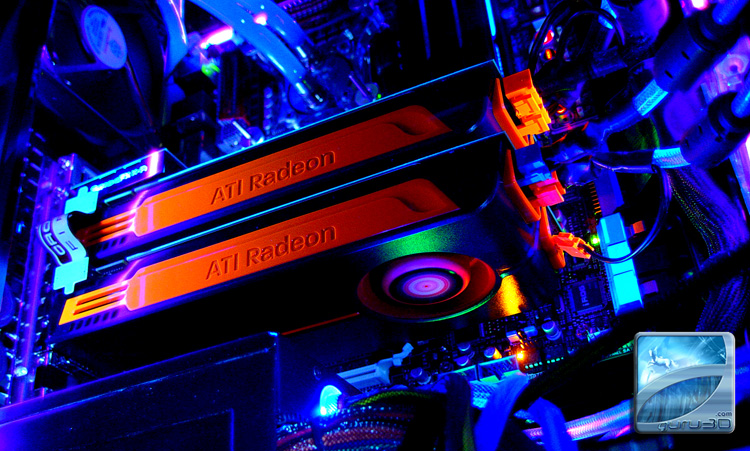Multi-GPU Setups (CrossfireX)
Multi-GPU Setups (CrossfireX)
Both NVIDIA's SLI and AMD ATI Crossfire allow you to combine/add a second or even a third similar generation graphics card (or in more GPUs) to the one you already have in your PC. This way you effectively try to double, triple or even quadruple your raw rendering gaming performance.
Think of a farmer with a Plough and one horse. One horse will get the job done yet by adding a second or third horse, you'll plough through that farmland much quicker and (hopefully) more efficiently. As weird as that analogy sounded, that's roughly the same idea for graphics cards. One card can do the job sufficiently, but with two or more you can achieve much more.
So along these lines, you could for example place two or more ATI graphics cards into a compatible mainboard, or two or more NVIDIA GeForce graphics cards in SLI mode.
- A Crossfire compatible mainboard is pretty much ANY mainboard with multiple PCIe x8 / x16 slots that is not an nForce motherboard.
- A SLI certified motherboard is an nForce motherboard with more than two PCIe xc16 slots or a certified X58 or P55 motherboard. If your motherboard does not have the SLI certification mentioned on the box, it's not SLI compatible. Keep that in mind.
Once we seat the similar graphics cards on the carefully selected motherboard we just bridge them together, with a supplied CrossfireX connector or in NVIDIA's case, a SLI connector. Then install/update drivers, after which most games can take advantage of the extra horsepower we just added into the system.
Multi GPU rendering -- the idea is not new at all... if you are familiar with the hardware developments over the past couple of years you'll remember that 3dfx had a very familiar concept with the Voodoo 2 graphics cards series. There are multiple ways to manage two cards rendering one frame; think of Supertiling, it's a popular form of rendering. Alternate Frame Rendering, each card will render a frame (even/uneven) or Split Frame Rendering, simply one GPU renders the upper or the lower part of the frame. So you see there are many methods where two or more GPUs can be utilized to bring you a substantial gain in performance.
In this article we'll test 2-way CrossfireX as well, 3-way CrossfireX we'll test in a separate article.

